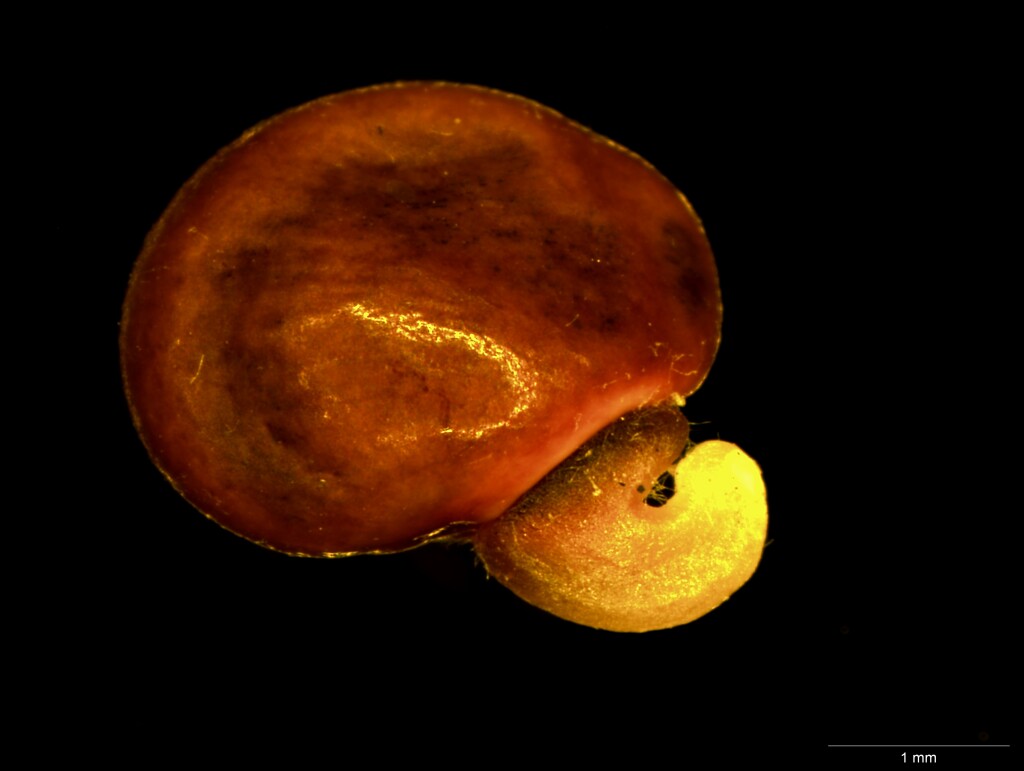Platylobium obtusangulum
Hook. Common Flat-peaTrailing to erect shrub to c. 1 m high; stems glabrous to densely villous. Leaves opposite, sessile or subsessile, broadly triangular, hastate or trilobate to ovate-cordate, 1–3 cm long, 0.6–3.8 cm wide; apex pungent; lateral lobes pungent or rounded and obtuse. Flowers 1–3 per axil, subsessile; pedicels 3–8 mm long, completely concealed by the imbricate bracts and scales; bracteoles overlapping the base of the calyx; calyx with dense long appressed hairs, upper lobes 12–15 mm long (including tube), lower lobes 8–9.5 mm long; ovary densely pubescent throughout. Pod with wing to 5 mm wide beyond the upper sutural nerve, pubescent throughout at least when young. Flowers Sep.–Nov.
Wim, GleP, VVP, GipP, OtP, WaP, Gold, CVU, GGr, DunT, WPro, HSF, HNF, OtR, Strz, VAlp. Also SA, Tas. Widespread in southern Victoria, most frequently in sclerophyll woodland and heathland.
Leaf shape in P. obtusangulum is extremely variable and quite unreliable as a means of differentiating the superficially similar P. triangulare.
On Wilsons Promontory and sporadically elsewhere, occasional specimens occur which have the pedicels exserted from the basal bracts and scales as in P. triangulare, but large erect bracteoles, large lower calyx-lobes and pubescent ovaries as in P. obtusangulum. These anomalous specimens have the general facies of P. obtusangulum and are usually found growing in populations of P. obtusangulum.
Ross, J.H. (1996). Platylobium. In: Walsh, N.G.; Entwisle, T.J., Flora of Victoria Vol. 3, Dicotyledons Winteraceae to Myrtaceae, pp. 816–819. Inkata Press, Melbourne.
 Spinning
Spinning
